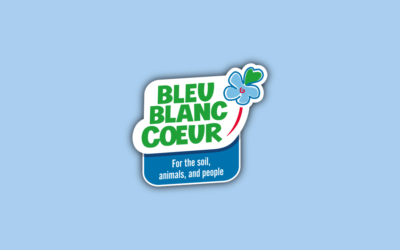The lipids are the fats and fatty substances present in our food and our body. They are representing an important energy source. In our body, lipids, especially the fatty acids, are the main component of cell membranes. According to their configuration, fatty acids will bring a solid frame or at the contrary a great flexibility to the cells. The relative proportion of fatty acids in relation to each other, is very important for cells are able to perform well their various functions.
The match of “omega”: omega-3 and/or omega-6?
Those fatty acids are said to be “essential” because of high importance, yet we are not able to synthetize them. We often hear about Omega-3, but to better understand their role, we also need to look at the Omega-6, which are on a side additional as well as in a perpetual competition. Ready for the match? … Let’go!
- The Omega-3 team: they are the link to the anti-inflammatory response, allow a normal growth, play an important role in the protection of cardiovascular disease, promote the elasticity of the arteries and the blood fluidity , and participate in the development of the retina, brain and nervous system.
- The Omega-6 team: they are more involved in the pro-inflammatory response. They are also making their contribution to the development of the nervous system, the cardiovascular balance, the immunity, the healing of wounds, and allergic reactions.
Ideally, to win the “match of omegas”, we should bring to our body in proportion 1 omega-3 for 4 omega-6. In the facts, in France for example, the ratio is more 1 omega-3 for 10 to 20 omega-6. It is annoying because, consumed in excess omega-6 can prevent Omega-3 to fulfill its role, notably for the cardiovascular protection, and cause pain and inflammatory diseases such as asthma or arthritis.

Why are we unbalanced in “omega”?
For the past 50 years, the nutritional recommendations set-up in the frame of the prevention of atherosclerosis and cardiovascular diseases, consist to advocate for the reduction of total lipids (those which are unbending) and the rise of unsaturated fatty-acids (those which are supple). But omega-3 and omega-6 are two teams of “unsaturated”. However, as we seen, they are not to be lumped together! Thus, due to a lack of knowledge, vegetal oils rich in omega 6 as sunflower oil were too much acclaimed.
In the same time, modifications of animal feed with a food based on corn and soya issue from intensive monoculture has progressively replaced the traditional grass. Consequently, we found a bigger proportion of omega 6 in animal products that we eat today compared to those consumed by our grandparents.
Many studies show that these food change (ours, but also the one of livestock from which we consume the by-products) have been ignored for too long and now are posing real problems. The ratio Omega-6/ Omega-3 impacts for example the development of the immune system and fatty tissue in early childhood, and might contribute to the increase of the prevalence of overweight and obesity. This unbalance has also been associated to an increase of inflammatory and auto-immunes diseases, dementia and certain cancers. Now, we are observing an increase in the Omega-6 / Omega-3 ratio in the maternity milk and in most foods consumed by the children and adult.
In order to adopt the right « omega » consumption, let’s first see where they are hiding…

It exists both vegetable and animal sources of fatty acids
The tiny fatty acids Omega-3 and Omega-6 are assembled only in plants, we call them « the precursors »: linoleic acid (LA) in the omega-6 family and alpha-linolenic acid (ALA) for omega-3. We found Omega 6 in seeds as soya, sunflowers or corn and Omega-3 in green plants like the grass, the alfalfa or seaweed also in the colza and certain of variety of flax. Depending on what animals and humans eat as plants, they accumulate theses precursors in different proportion in their cells.
The bigger members of each team, long chain fatty acids, are created by the animals from the precursors to which some additional “links” are added. Depending on the animals, the conversion of precursors fatty acids into long chain fatty acids is more or less efficient. The fishes are experts of this conversion of little chain Omega-3 into long chain Omega-3, especially those in the cold seas that need a good layer to survive, but the laying hens are not left out and can include it in their eggs if they have enough ALA in their food. This is the case of the Bleu-Blanc-Coeur eggs because the diet of the hens is containing in particular flax (rich in Omega-3) and the hens converts a part of it into DHA (long-chain omega-3 fatty acid).
Acting for more Omega 3 every day
To balance the match between Omega-6 and Omega-3, it is recommended to consume more than 2 grams of Omega 3 per day (2,2g of ALA precursors and 500 mg of long chains). The products of the Bleu-Blanc-Coeur approach provide more Omega-3. They are better balanced because they contained also less Omega-6 and less saturated fatty acids. Replacing the standard animal products, in its daily food with animal products from this production method allows the improvement of the lipid profile of its food while moving toward the nutritional recommendations.
The Omega-3 are also present in the canola oil (from 1 to 1,5 grams per big spoon), nuts (4 per day is sufficient) or in cooked flaxseeds which are particularly rich in it and can be shake in many plates. It is also recommended to eat 2 portions of fish per week, including one fatty fish. The highest levels of Omega-3 are found in mackerel, herring, sardines, tuna and salmon even if the contents for the same fish, tend to vary according to the seasons and their feed.







 Home
Home

